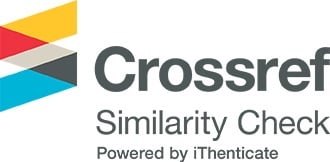Ảnh hưởng của thái độ, mạng xã hội và điều kiện của Gen Z đối với việc tham quan triển lãm nghệ thuật
Các tác giả
DOI: https://doi.org/10.59294/HIUJS.28.2024.596Từ khóa:
triển lãm nghệ thuật, mạng xã hội, hành vi, thế hệ ZTóm tắt
Mục tiêu: Bằng việc áp dụng Thuyết Hành vi có Kế hoạch của Ajzen, nghiên cứu được thực hiện để đo lường tác động của mạng xã hội lên hành vi tham quan các không gian triển lãm nghệ thuật – loại hình giải trí và học tập ít được quan tâm tại Việt Nam – của khách tham quan với các kết quả phục vụ cho đề xuất về chiến lược truyền thông trên mạng xã hội của các không gian nghệ thuật tại Việt Nam. Người tham gia: Nghiên cứu được thực hiện trên 516 sinh viên và người đi làm từ 18 đến 24 tuổi đang sinh sống tại Hà Nội và Thành Phố Hồ Chí Minh (Việt Nam). Kết quả: Kết quả cho thấy thái độ có ảnh hưởng đến hành vi tham quan các không gian triển lãm nghệ thuật (a=0.162, b=0.111) bên cạnh các yếu tố khác như nơi sinh sống (=0.086), tần suất tham quan trước đó (=0.256), tần suất thấy các thông tin liên quan đến triển lãm (=0.179).
Abstract
By applying Ajzen's Theory of Planned Behavior, the study was conducted to measure the impact of social networks on the behavior of visiting art exhibition spaces - a type of entertainment and learning little attention in Vietnam - by visitors with results serving suggestions on social media communication strategies of art spaces in Vietnam. The study shows that attitude affects the behavior of visiting art exhibition spaces (βa= 0.162, βb= 0.111) in addition to other factors such as place of residence (β = 0.086), frequency of previous visits (β = 0.256), frequency of seeing information related to the exhibition (β = 0.179).
Tài liệu tham khảo
[1] “Why creativity? Why cities?” Creative Cities Network. (n.d.). https://en.unesco.org/creative-cities/content/why-creativity-why-cities.
[2] Nguyen, V. H., Truong, T. X. D., Pham, H. T., Tran, D. T., & Nguyen, P. H., “Travel Intention to Visit Tourism Destinations: A Perspective of Generation Z in Vietnam”, The Journal of Asian Finance, Economics and Business, 8(2), 1043–1053. 2021. https://doi.org/10.13106/jafeb.2021.vol8.no2.1043.
[3] Griffiths, J. and King, D., “Interconnections: The ILMS National study on the use of Libraries, Museums and the Internet”, Chapel Hill, 2008.
[4] Dean, D. A., 2002, Museum exhibition. In Routledge eBooks. https://doi.org/10.4324/9780203039366
DOI: https://doi.org/10.4324/9780203039366[5] Howard, P. N., & Parks, M. R. “Social media and political change: capacity, constraint, and consequence”, Journal of Communication, 62(2), 359–362. 2012 https://doi.org/10.1111/j.1460-2466.2012.01626.x
DOI: https://doi.org/10.1111/j.1460-2466.2012.01626.x[6] Carr, C. T., & Hayes, R. A. “Social Media: defining, developing, and divining.” Atlantic Journal of Communication, 23(1), 46–65. 2015. https://doi.org/10.1080/15456870.2015.972282
DOI: https://doi.org/10.1080/15456870.2015.972282[7] Francis, T and Hoefel, F. 'True Gen': Generation Z and its implications for companies. Truy cập ngày 01/12/2021, từ https://www.mckinsey.com/industries/consumer-packaged-goods/our-insights/true-gen-generation-z-and-its-implications-for-companies
[8] Schroth, Holly, “Are You Ready for Gen Z in the Workplace?”, California Management Review, 000812561984100–.2019. doi:10.1177/0008125619841006
DOI: https://doi.org/10.1177/0008125619841006[9] Ramgade A. and Kumar A., “Changing trends of hospitality industry: Emergence of Millennials and Gen Z as future customers and their influence on the hospitality industry”, Vidyabharati International Interdisciplinary Research Journal, 12(2), 110-116, 2021.
[10] Ajzen, I., “The theory of planned behavior”, Organizational Behavior and Human Decision Processes, 50(2), 179–211. 1991. https://doi.org/10.1016/0749-5978(91)90020-t
DOI: https://doi.org/10.1016/0749-5978(91)90020-TTải xuống
Tải xuống: 598











